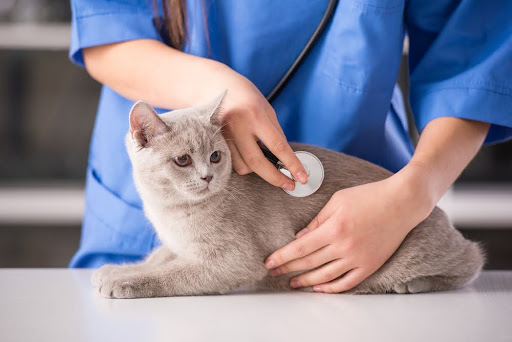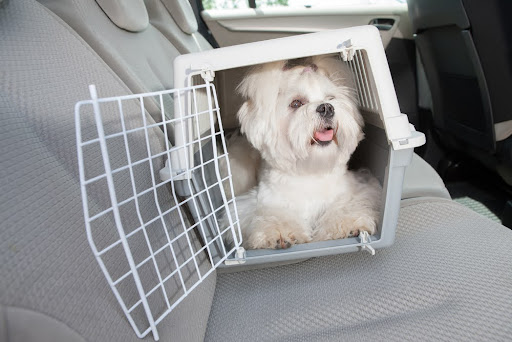Em-bark-ing on a long-distance move presents a unique set of challenges and opportunities, especially when you’re bringing your pets along. Whether you’re relocating for a new job, to be closer to family or simply for a change of scenery, ensuring a smooth transition for your furry friends is crucial. Bekins has put together a guide on essential tips for moving with a pet. We cover everything from preparation to how to help your pet adjust in your new home.
Tips for Moving with Pets Across States
Understanding Pet Travel Regulations for Interstate Moves
It’s important to be aware of any specific requirements and regulations when moving your pet across state lines. For example, some states may have entry requirements for pets, such as rabies vaccinations or health certificates. Early preparation can help you navigate these requirements smoothly.
- Research and Documentation: Check if your new state has specific health requirements for pets. Essential documents typically include a current health certificate and proof of rabies vaccination.
- Health Checks: Visit your veterinarian to ensure your pet is fit for travel and to obtain any necessary health certificates or vaccinations.
- Update ID Tags and Microchips: Before you move, update your pet’s ID tags and microchip information with your new address and contact information. This is crucial in case they escape during the move; it increases the chances of a safe return.

Travel Arrangements: Flying or Driving?
Deciding whether driving or flying is the best option for your pet depends on the distance, your pet’s health and personal preference. If you’re driving, plan your route and identify pet-friendly accommodations along the way. If flying, contact the airline well in advance to discuss your options and understand their pet travel policies.
How to Help Your Pet on Moving Day
The day you move with your pets can be stressful, but with the right preparation, you can make it as seamless as possible. Here’s how:
Pack an Essentials Kit
Just as you’d pack a suitcase for yourself with essentials for a few days, your pet needs one too. Here’s what to include in your pet’s essentials kit:
- Food and Water: Pack enough for several days to a week, depending on the length of your move and how quickly you’ll be able to restock. Remember, sudden changes in diet can upset your pet’s stomach, so it’s better to have their regular food available.
- Bowls: Collapsible bowls are great for saving space and can be easily used on the go.
- Toys and Comfort Items: Familiar toys, blankets, or bedding can provide comfort and a sense of normalcy for your pet during this stressful time.
- Medications: If your pet is on any medications, ensure you have enough to last until you can visit a new vet. Also, consider including a basic pet first-aid kit.
- Leash and Collar: Keep these easily accessible, especially if you’re traveling by car and plan to make stops along the way.
- Important Documents: Have a copy of your pet’s vaccination records and any other important health documents handy, especially if you’re staying at hotels or crossing state lines where you might need to show proof of vaccinations.
Keep Your Furry Friend Safe and Secure
The physical and emotional safety of your pet on moving day is paramount. Here’s how to ensure they stay secure:
- Secure Them in a Quiet Room: Before the movers arrive, designate a quiet room in your house where your pet can stay. Place their bed, toys, and water bowl inside to make them comfortable. Put a sign on the door to keep movers and helpers out, reducing the risk of stress and escape.
- Use a Crate or Carrier: If your pet is crate-trained, their crate can be a place of safety and comfort during the move. Ensure the crate is well-ventilated, secure and large enough for your pet to stand, turn around, and lie down comfortably. If you’re driving, secure the crate in a seatbelt or place it in a stable, secure spot in the car.

Home Sweet Home: Making Your Pet Comfortable
The Adjustment Period
Once you’ve arrived at your new home, give your pet time to adjust to their new surroundings. The adjustment period can vary, but maintaining a routine similar to your previous one can help your pet feel more at ease. Here are a few tips on helping your pet adjust:
- Familiarize Them with the New Home: Gradually introduce your pet to different areas of your new home, allowing them to explore at their own pace.
- Find a New Vet: One of the first things to do after settling in is to find a reputable veterinarian for a check-up and to establish care for your pet.
Create a Positive Environment
Your furry friend looks to you for comfort and reassurance during this transition. Keeping a positive attitude and providing lots of love and attention can help your pet settle in more quickly.
Ready to Start Your New Adventure Together?

Moving long distances with a pet requires careful planning and consideration. However, it’s entirely possible to make the transition smooth with the tips above. If you need additional help with your upcoming move, reach out to the relocation experts at Bekins Van Lines. We offer an array of services to help you and your pet get to your new home quickly and safely.


